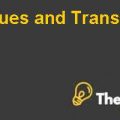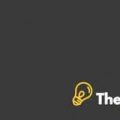FINANCE ASSIGNMENT Case Solution
Chapter 4
Problem 7
a.
The two possible stock prices for the next period could be $ 21.25 (25*0.85) and $ 28.75 (25*1.15).
b.
The intrinsic value of the European call option at the expiration would be 2.9720
c.
The value of the call option today would be 2.9173.
d.
The best hedge would be to buy calls on the stock and on the other hand,reduce the stock. The increase or decrease in the stock price would be offset by the call options intrinsic value and the only return earned would be the return equal to the risk free rate.
e.
If the call is selling for $ 3.50 then the rate of the return when the hedge is initiated would be (3.5-2.9173)/2.9173 = 19.97%.
Problem 8
a.
The stock price sequence for the next two periods could be as follows:
| Stock Price Sequence | ||
| Period 1 | Period 2 | |
| If Stock Goes Up | 49.5 | 54.45 |
| If Stock Goes Down | 40.5 | 36.45 |
b.
The possible prices for the call at the expiration could be 8.9583 for both the European and American options.
c.
The possible prices for the call at the end of the first period could be 7.0301 for both the European and American options.
d.
The current price of the call is 8.9588.
e.
The initial hedge ratio would be 8.9583/8.9588 = 99.99%
f.
The two possible hedge ratios at the end of the first period would be 7.0301/8.9588 = 78.47% and 100% of hedge.
g.
An investor can purchase the stocks and buy put options on those stocks. Therefore, when the stock price increases or decreases, the investor can allow the option to exercise or lapse whatever would be the favorable situation. The profit earned by the investor would be equal to the risk free rate.
h.
If the call were overpriced, the investor would not buy them but if they were under priced, the investor would buy them.
Problem 11
The price of the European call and put options today would be 19.38 and 0.32 whereas, the prices of the American call and put options would be 19.38 and 0.46.
The software solution is shown in the image below:
Moreover, the risk free hedge along with the binomial tree for multiple periods is also shown below:
Finance Assignment Case Solution
Problem 12
The up and down factors for a one year option would be as follows:
| Stock volatility | 55% | ||||
| Rf | 7% | ||||
| Option years | 1.00 | ||||
| n | 1 | 5 | 10 | 50 | 100 |
| u | 1.7332 | 0.7751 | 0.5481 | 0.2451 | 0.1733 |
| d | 0.5770 | 1.2902 | 1.8246 | 4.0799 | 5.7698 |
Problem 13
Using the excel model for Black Sholes Merton, the value of the call would be 8.8118 as shown below:
Problem 16
Using the excel spreadsheet, the call price would be 14.2313 and the put price would be 9.3542.
The put call parity is given by:
C + X(1+r)^t = So + P
14.2313 + 100 x Exp^(-0.05*1) = 100 + 9.3542
109.35 = 109.35 hence put call parity is proved.
Problem 17
The values for P and H are as follows:
| Call options | 1 | 2 | 3 |
| Strike Price | 90 | 100 | 110 |
| Stock price | 100 | 100 | 100 |
| Time to maturity | 1 | 1 | 1 |
| Rf | 5% | 5% | 5% |
| u | 1.3333 | 1.3333 | 1.3333 |
| d | 0.7500 | 0.7500 | 0.7500 |
| p | 92.857 | 95.238 | 97.619 |
| h | 1.000 | 0.000 | 0.091 |
The p shows the option values for each of the three call options which is the weighted average of its two possible values in the next period where the weights are p and 1-p. Moreover, h is the hedge ratio for each of the three options................
This is just a sample partial case solution. Please place the order on the website to order your own originally done case solution











